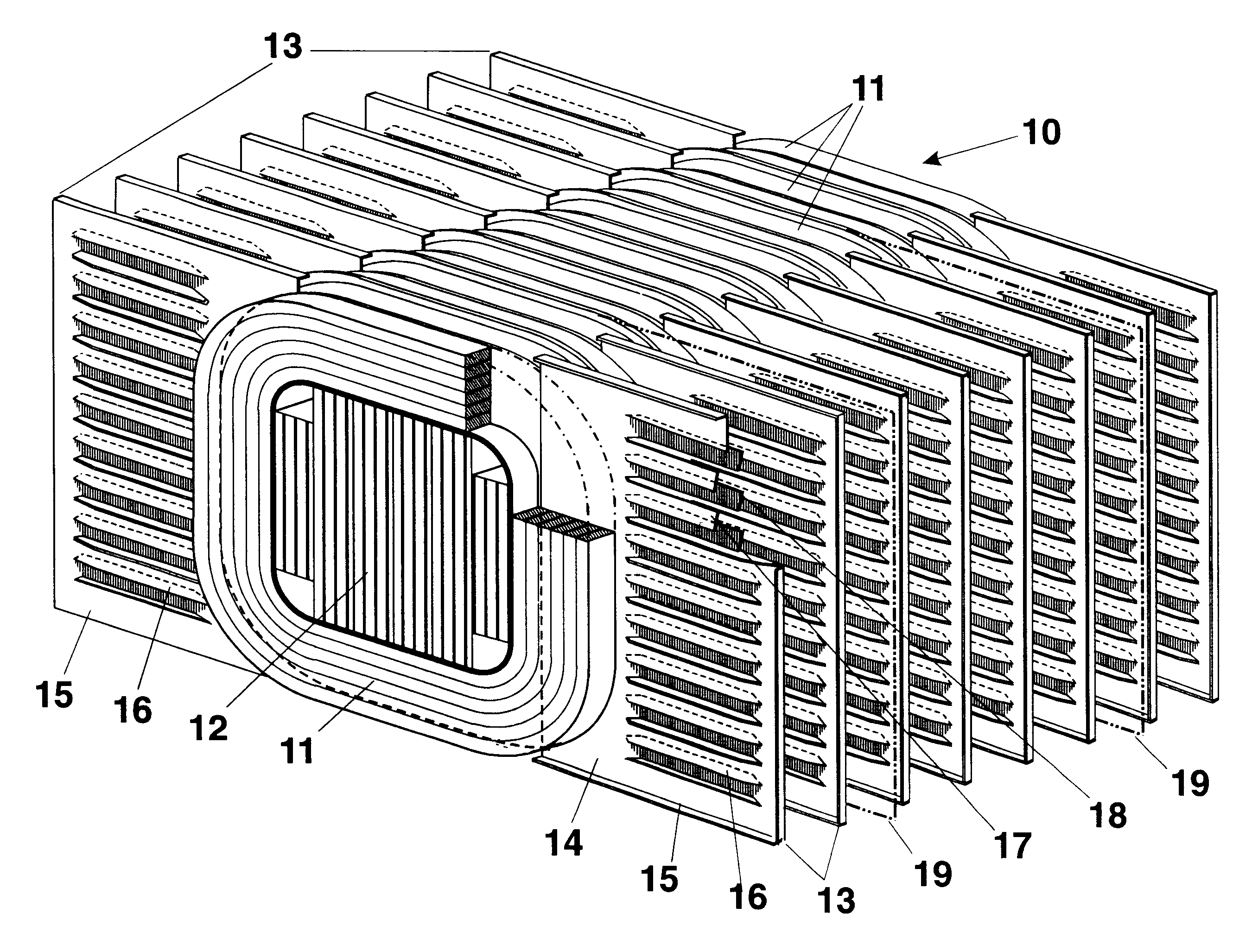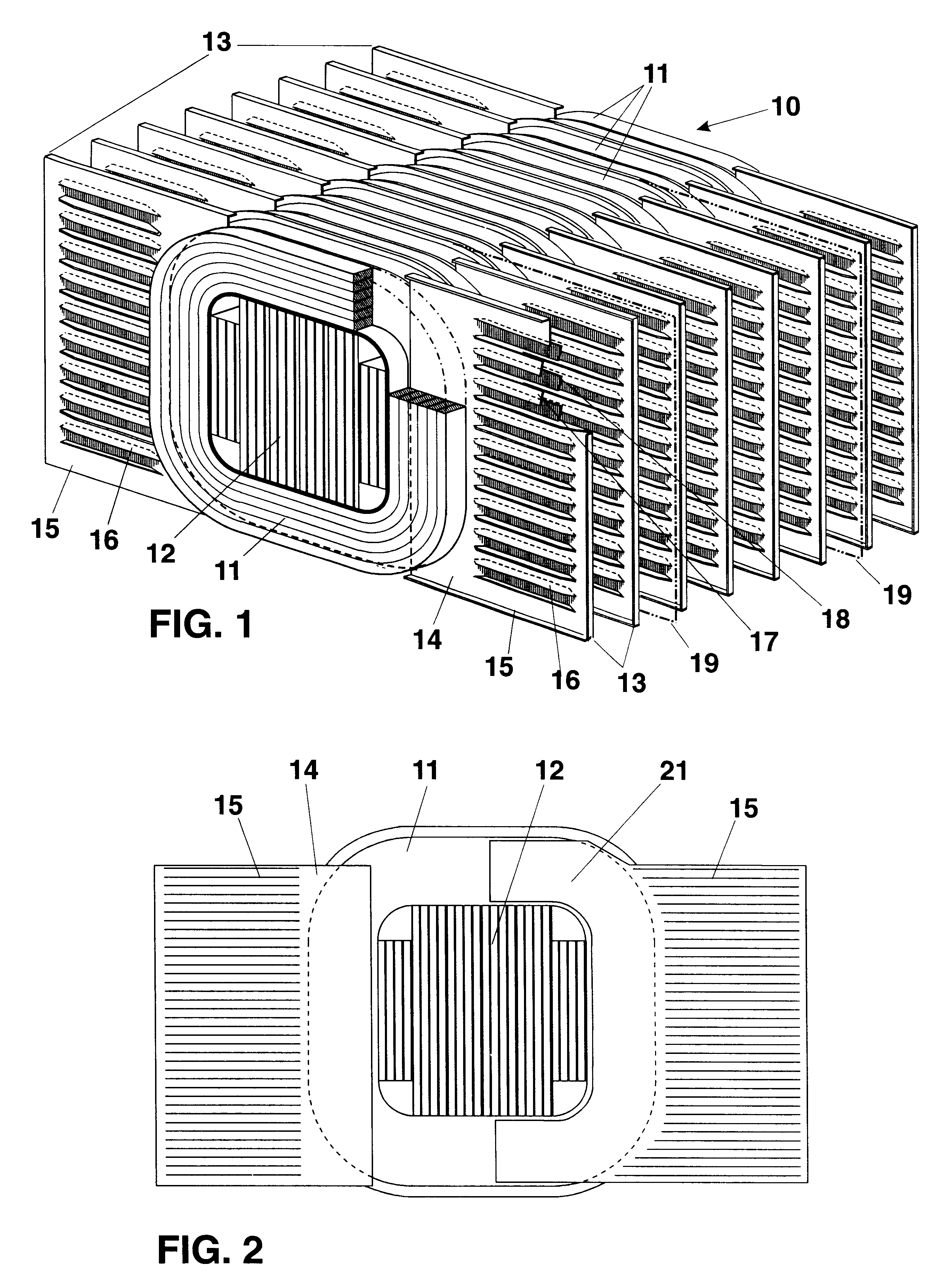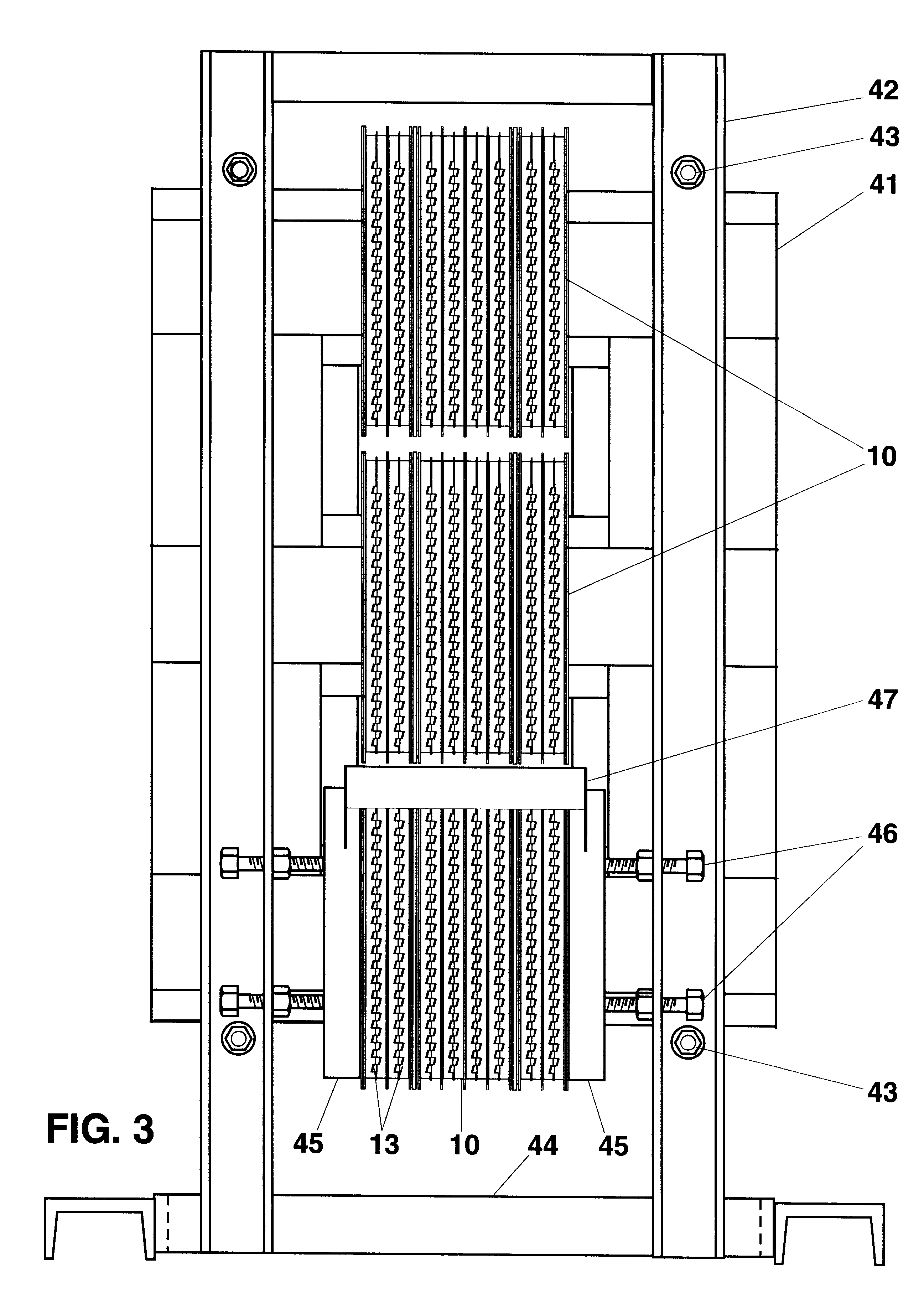Small footprint power transformer incorporating improved heat dissipation means
a technology of heat dissipation means and small footprint, which is applied in the direction of transformer/inductance cooling, electrical equipment, basic electric elements, etc., can solve the problems of increased losses, increased weight of windings, and inefficient ducts
- Summary
- Abstract
- Description
- Claims
- Application Information
AI Technical Summary
Problems solved by technology
Method used
Image
Examples
Embodiment Construction
FIGS. 7 and 8 illustrate the shell type core structure used in FIGS. 5 and 6. The core 51 is constructed from building blocks e.g. 71, 72, 73, of steel lamination stacked to have equal height and assembled with butt joints. The wider leg blocks 71 and the end blocks 72, and the yoke blocks 73, 74 extend to the entire length of the leg. Two short filler blocks 75, 76 close the magnetic circuit. After each block is in place on the same level, tie sheets 77 placed over the assembled blocks to bridge all butt joints, and to serve as mechanical connection between the blocks. Filler sheets 78, 79 are placed between tie sheets on the same level to complete the magnetic circuit between them. At least the shorter blocks 73, 74 can be provided with adhesive means for converting them into solid objects to facilitate the assembly of the core.
FIG. 9 illustrates a conventional three phase core 90 built in the same style as the core 51 in FIGS. 7, 8 and used in the transformer shown in FIGS. 3, an...
PUM
 Login to View More
Login to View More Abstract
Description
Claims
Application Information
 Login to View More
Login to View More - Generate Ideas
- Intellectual Property
- Life Sciences
- Materials
- Tech Scout
- Unparalleled Data Quality
- Higher Quality Content
- 60% Fewer Hallucinations
Browse by: Latest US Patents, China's latest patents, Technical Efficacy Thesaurus, Application Domain, Technology Topic, Popular Technical Reports.
© 2025 PatSnap. All rights reserved.Legal|Privacy policy|Modern Slavery Act Transparency Statement|Sitemap|About US| Contact US: help@patsnap.com



